Toilet bowls: from construction to selection

The toilet is the most important plumbing fixture that determines the level of comfortable living in a comfortable home. The convenience of using the bathroom depends on its proper operation and ergonomics.

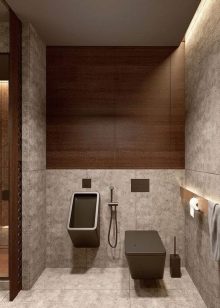
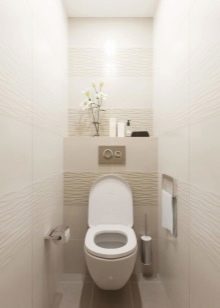
History of appearance and development
The prototype of the modern toilet bowl appeared more than 4 centuries ago. John Harrington invented such an unusual reservoir for those times, and he did it especially for Her Majesty Elizabeth I. However, due to the lack of water and sewer communications in houses, the innovation did not become widespread, and remained at the level of an ingenious, but useless for mass use development.
And only a couple of centuries later, namely in 1738, a flush toilet was created, and a little later, in 1775, designer A. Cummings invented and patented a water seal system that solves the problem of an unpleasant odor.
This, undoubtedly, was a breakthrough in engineering and made the toilet a truly unique device for that time.

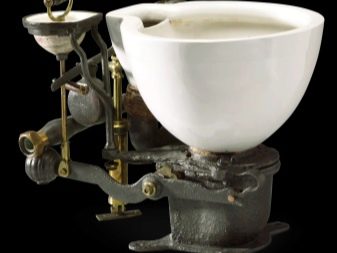
The ingenious engineering solution impressed contemporaries very much and inspired the best design minds to refine and modernize the newly-minted device. So, in 1777 J. Preser completed the existing model with a valve-type cistern and equipped it with a handle.
And a year later, T. Krepper, the owner of several technical patents, developed and tested a metered drain system, which has survived practically unchanged to this day.The toilet remained in this form until the second half of the 19th century, until in 1883 T. Twyford made changes to Krepper's model. He added a wooden seat to it and used beautiful earthenware to make the bowl instead of the previously used cast iron.
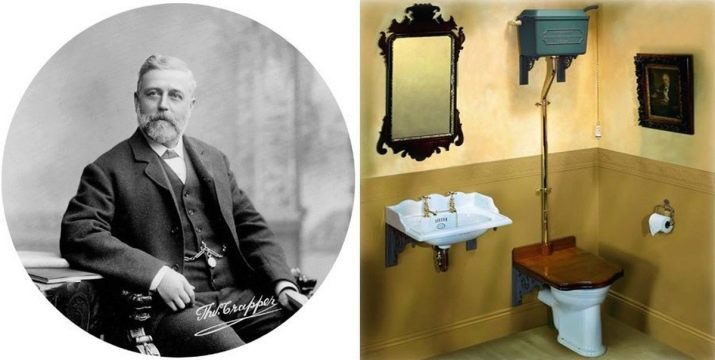
The creation turned out to be so successful that it won the highest gold award at the International Health Exhibition, held in London in 1884. The device was called nothing more than a toilet chair, and the term "toilet" appeared a little later. and owes its origin to the Spanish company Unitas, which produced and supplied its plumbing fixtures to different countries at the end of the 19th century.
Over time, the name of the company was transformed into the word "toilet" and began to be used to refer to a toilet chair.
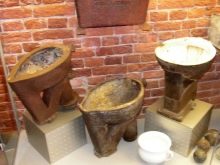
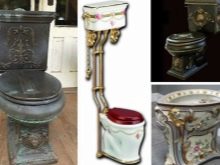

In tsarist Russia, the production of toilet bowls began at the dawn of the 20th century., after the industrialists acquired a license to manufacture them. By 1912, about 40 thousand copies were made in the country, and in 1929 alone - 150 thousand pieces. After the adoption of five-year plans, the Soviet government ordered to bring production to the level of 280 thousand pieces per year, thereby providing all government agencies and most apartment buildings with the benefits of civilization.
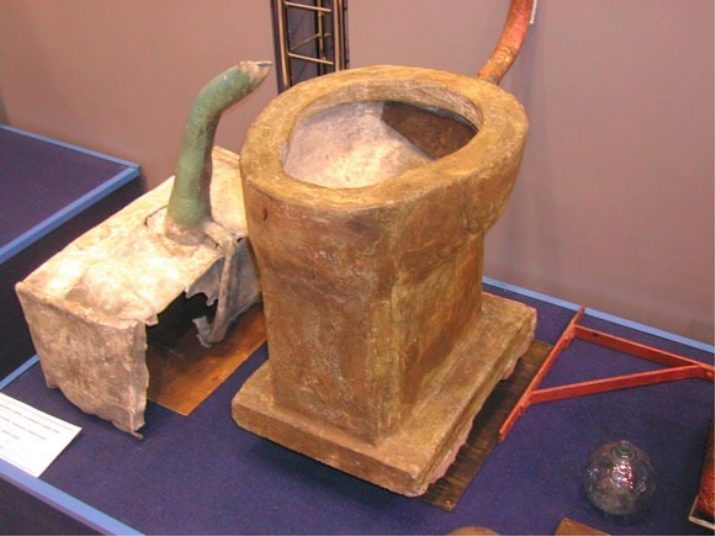
The Soviet toilet was a faience bowl with a cistern towering over it on a long pipe. A metal chain was tied to the drain handle, for convenience it was equipped with a wooden knob. Such copies were made conscientiously, which is why they can still be seen in communal apartments in the countries of the former USSR.
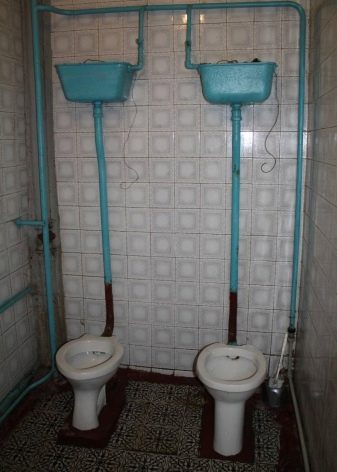
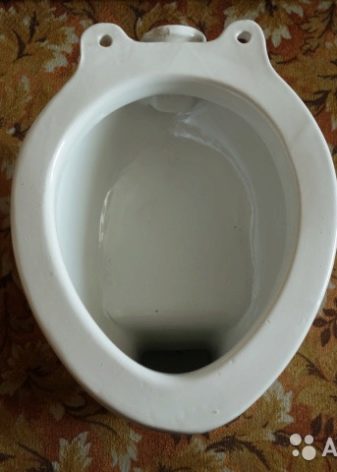
In other countries, for example, in the United States, the development and introduction of toilets in the life of citizens went a little slower, and the first toilet bowl, independently designed by American specialists, appeared in 1890 (today the model is in the Seattle Museum). Until the production of devices was established within the country, they were massively purchased from the same company Unitas, however, after building its own production facilities, America quickly went ahead and only the Japanese could compete with it.
Modern toilets are noticeably different from their age-old predecessors and look very stylish. They acquired a compact flush cistern, changed their shapes to more ergonomic ones and acquired many additional functions.

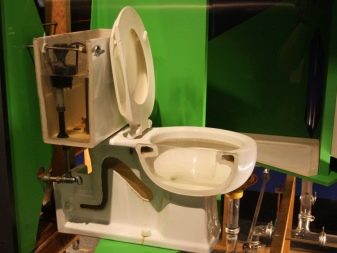
How are they arranged?
The toilet is arranged quite simply and consists of several modules - a bowl, a flush cistern and a toilet seat.

Bowl
The bowl serves for the reception and temporary location of sewage, which are discharged into the sewerage system by a drain system. In the depth of the bowl there is an S-shaped siphon, in which there is always a water plug, which provides a water seal and does not allow contaminated liquid to return back into the bowl.
Moreover, thanks to the water seal, unpleasant odors from the sewer systems do not enter the bathroom.
The siphon ends with an outlet - a short piece of pipe, which ensures that the faeces go into the sewer system.


Flushing cistern
The tank is used to accumulate and store tap water, designed to cleanse the bowl from fecal matter. It has a simple structure and consists of a filling system and a release mechanism. The filling system is represented by a float valve that stops the flow of water into the tank after it reaches a certain level, and an inlet pipe that ensures the flow of water from the water pipes directly into the drain tank.
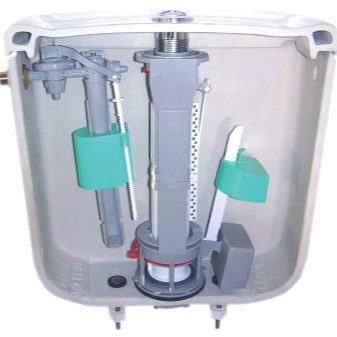
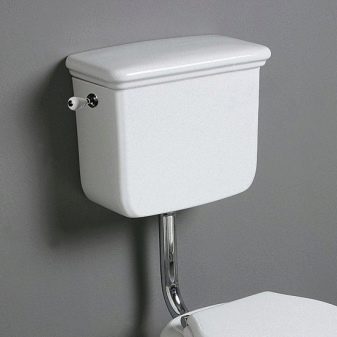
The branch pipe has a flexible design, side or bottom connection and is made of anti-corrosion materials. The bottom connection is preferable because the filling of the tank is absolutely silent, and during the flow of water from the side pipe, the murmur is heard quite clearly.
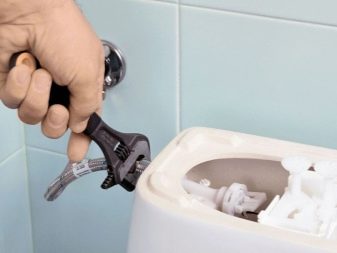
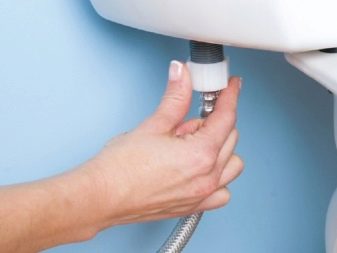
The drainage mechanism depends on the design of the drain tank and can be pear and siphon... The first is used in compact low-lying tanks and is represented by a rubber bulb located at the bottom of the tank and closing the drain hole.
When you press the flush button, the pear floats to the surface of the water, opens the drain hole and allows the water to flow out of the tank into the bowl. After the flush button is released, the bulb returns to its place and reliably closes the tank drain hole. Such tanks are equipped with an overflow protection provided by a discharge pipe.
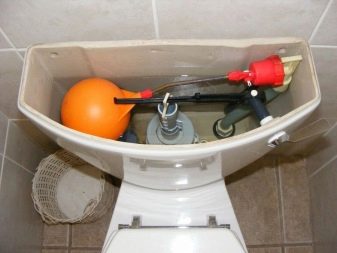
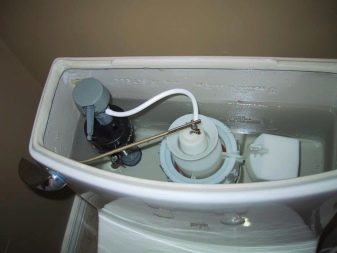
The siphon release mechanism is used in high-positioned tanks, when, when the lever is pressed, the water, due to the siphon effect, noisily flows down a long pipe and washes the bowl. Such a mechanism is not very common and began to go down in history along with high tanks.
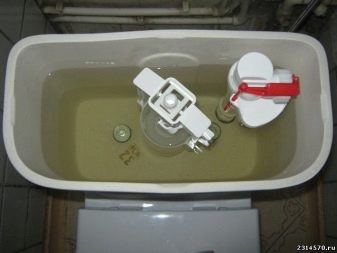
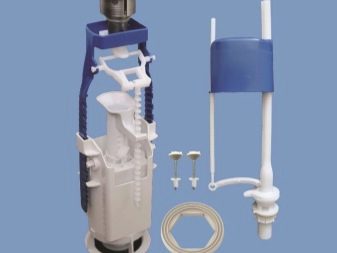
Stulchak
Designed to fit comfortably on the toilet, it consists of a seat and a lid. By their design, the toilet seats are soft and rigid, and they are attached to the bowl by means of metal or plastic fasteners.
The first models of toilet seats were made of wood and had a varnish finish, while modern ones are made from more hygienic plastic.
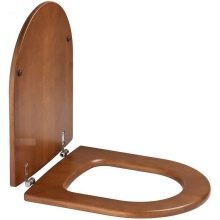
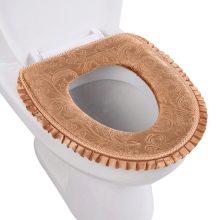

Types and their characteristics
The classification of toilets is made according to several criteria, such as the type of installation, the design and location of the drain tank, the way to control the drain, the type of bowl, discharge into the sewer, the type of flush and the material of manufacture.
Installation method
On this basis, toilets are divided into floor and suspended.
Floor models placed on the floor and attached to it with the included dowels. The advantages of this type include wide consumer availability, the ability to purchase budget models and ease of installation.
Among the shortcomings, some bulky products are noted, which is especially noticeable in small bathrooms. Floor models are of several types: this classic toilet bowls with a compact cistern, attached (wall) models, tightly adjacent to the wall, and Genoa bowls, called Turkish toilets.
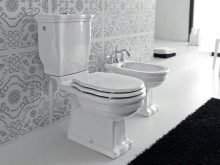
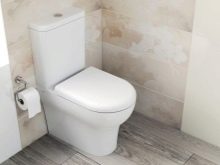
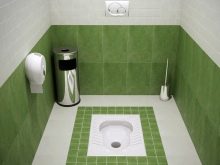
Hanging toilet bowls appeared on the market much later than the floor ones, but they immediately gained popularity and gained many fans. In addition to saving space in the bathrooms, the advantages of hanging models include the possibility of wet cleaning the floor under the bowl and a stylish appearance. The device is mounted directly on the wall using a block or frame installation, the type of which is chosen depending on the quality of the wall.
Block installations are fixed to the main walls using metal plates and anchor bolts. Frame installations are intended for plasterboard and other non-capital partitions and consist of a frame that is attached to both the floor and the wall. Thanks to this, the entire load falls not on the wall, but on the floor, allowing the structure to withstand a weight load of up to 400 kg.
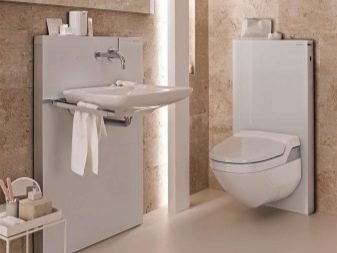
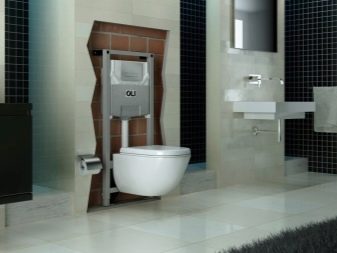
The drain tank for suspended models is usually walled up into the wall along with the installation, while a panel with release buttons is left on the surface. The mechanisms of the built-in cisterns are designed in such a way that if necessary, they are easily removed from the tank cavity through the holes of the release buttons.
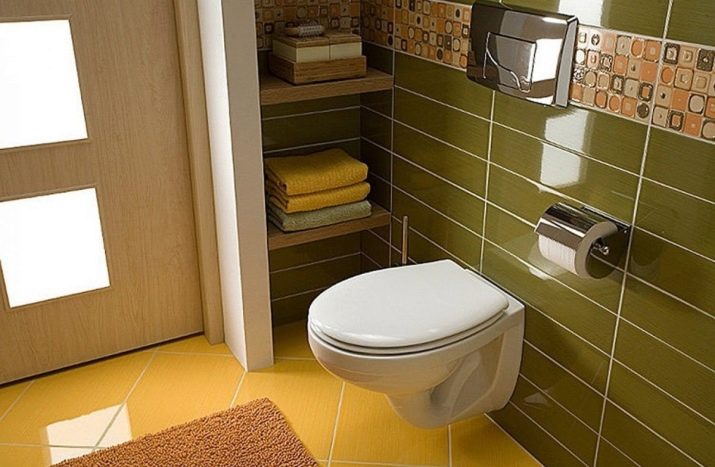
The device and place of installation of the cistern
The flush cisterns differ among themselves by the descent mechanism, which was discussed above, and the location. According to the latter criterion, they are distinguished compact cisternsinstalled directly on the back shelf of the toilet, and tanks located separately.
Compact models can have a one-piece structure with the toilet bowl, or they can be attached to it by means of bolts and a rubber cuff, which ensures the tightness of the drain system. Freestanding cisterns are connected to the toilet bowl by means of a branch pipe and can be located next to the device or be built into the wall.

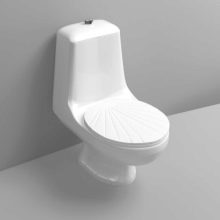
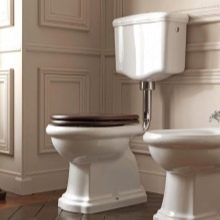
Older cisterns, which are connected to the toilet body with a two-meter pipe, also belong to this type of tanks and provide better flushing compared to compact models. The high flushing efficiency is due to the high speed of the water flow entering the bowl from a sufficiently high height.

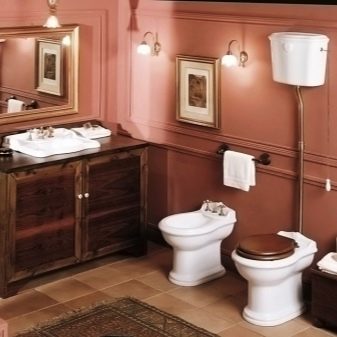
Cisterns built into the wall are usually included in the installation system and, together with the sewer outlet, water pipe and fittings, are hidden behind the false wall.
There are also toilets without a cistern, which are flushed directly from the water pipe. However, due to the not too high efficiency of flushing, such specimens were not widely used.

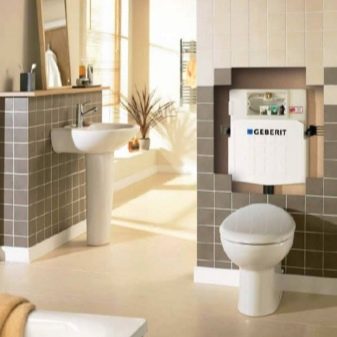
Discharge control method
On this basis, a push-button and a lever flush system are distinguished. Lever models are equipped with a special lever located on the side of the cistern, when pressed, water is released. However, this type of control is becoming a thing of the past, giving way to the more modern push-button flush.
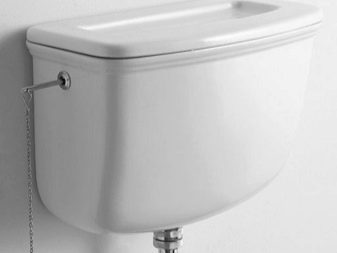

Bowl type
By their design, toilet bowls are dish-shaped, visor and funnel-shaped.
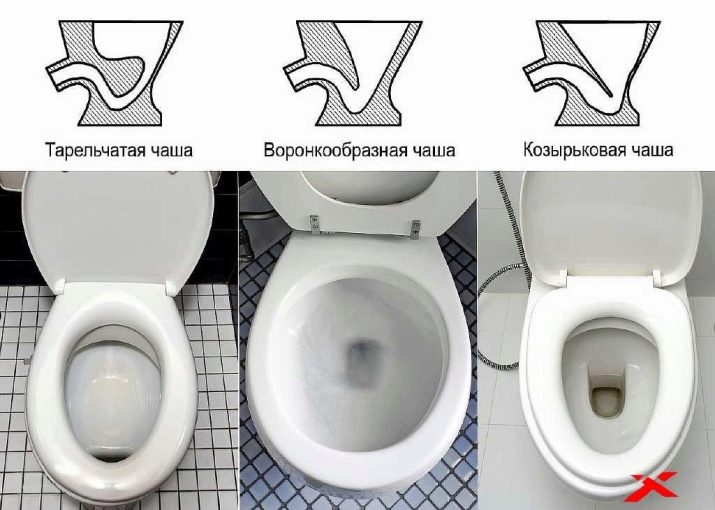
Have dish models the back wall of the bowl is made in the form of a horizontal ledge and resembles a plate in shape. The advantage of this design is the absence of a splash when fecal matter enters the bowl, and the disadvantages include an unpleasant odor that will spread from the toilet until the flush is made.

V visor models the back wall of the bowl has no ledges and is located at a uniform slope of 35-40 degrees relative to the drain.
When using these toilets, there is no splashing, and the faeces quickly go into the lower part of the body, filled with water, preventing the spread of unpleasant odors.
The only drawback of visor models is the need to clean the "slope" of the bowl with a brush after each visit to the toilet or use a more thorough, often double flush.
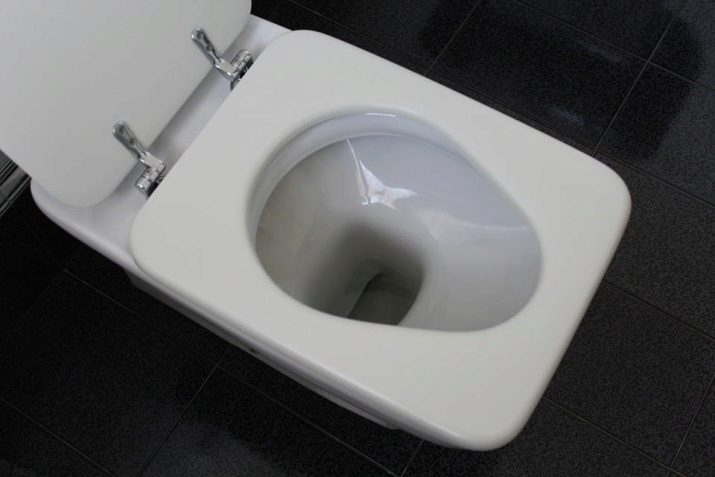
Funnel bowl has the shape of a funnel and is used more in foreign models. Despite the presence of a "splash" from fecal masses, this form is considered more hygienic: the walls of the toilet are practically not dirty, and the unpleasant smell simply does not have time to spread through the toilet.

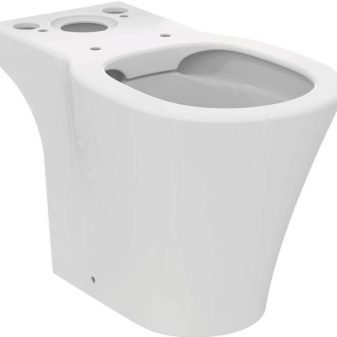
Type of release to the sewer
The location of the outlets intended for the release of the contents of the toilet bowl into the sewer is horizontal, oblique and vertical. When choosing the most suitable option, they are guided by the location of the sewer pipe.
So, if the pipe is in the floor, then it is better to buy a toilet with a vertical outlet, which will significantly save space in the toilet... The outlet of this type of model is directed straight down and is hidden in the toilet bowl.
For the most part, models with a vertical outlet are common in the USA and European countries, which is due to the distribution of sewer loungers exclusively under the ceilings, without entering the walls.
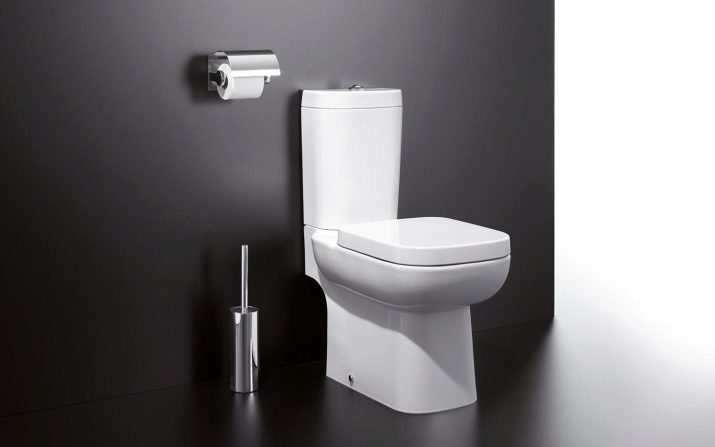
A toilet with an oblique outlet is chosen if the sewer lounger is located in the floor too close to the wall and it is not possible to use the vertical outlet. The toilet bowl is connected to the sewer pipe by means of a corrugated pipe.
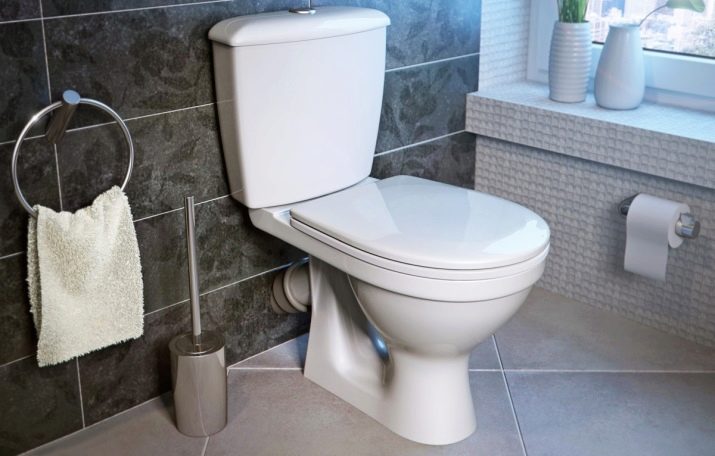
Horizontal release is considered the most versatile way to connect a toilet with a sewer pipe located in the wall. Models with horizontal and oblique outlet have become widespread in our country, which is again explained by the peculiarities of the wiring of intra-house sewer communications.

Flush type
According to this criterion, toilets come with direct and circular flush. The first is a traditional design in which water, without changing its direction, moves from the tank to the bowl and washes its middle part. This flushing method produces a lot of noise and splashing.

In devices with a circular flush, water flows when moving from the tank to the bowl pass through special channels, evenly distributed over the entire diameter of the bowl. This method is virtually silent, very economical and does not create splashes. The disadvantage of a circular flush is the high probability of clogging of the thin channels when using too hard tap water.

An overview of the types of toilet bowls would be incomplete without mentioning special samples, which include toilet bowls installed in trains. Such models have a reinforced structure, consisting of a durable steel body, and are equipped with a pedal escapement or vacuum drainage system. For the first, water is supplied to the flush after pressing the pedal and occurs synchronously with the opening of the lower flap. The latter are better known as dry closets, in which the process of flushing and removing faeces occurs after pressing a special button located on the side of the toilet on the wall.
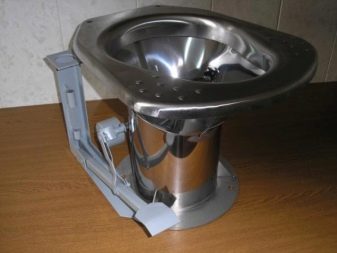
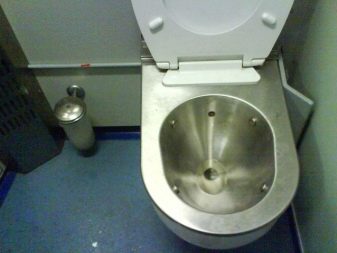
Dimensions (edit)
The modern plumbing market offers a huge selection of toilets of different shapes and sizes. According to the existing state standard, Russian companies produce toilet bowls in the following dimensions of height, length and width: 33.5x40.5x29 cm - children's models, 40x46x36 cm - devices that do not have a one-piece shelf for a compact cistern, and 37x60.6x34 cm - specimens equipped with shelf under the tank. However, with the arrival of foreign samples on the Russian market, it is often possible to find specimens whose height varies from 420 to 500 mm.
Most of the models are designed for a standard weight load of 200 kg, however, among floor models there are specimens designed for 600 kg, and among suspended ones - for 400 kg. The size of the cistern also varies depending on the model, but its volume never exceeds 6-8 liters.
When installing pendant models there are no strict height requirements, but the distance between the floor and the bottom of the toilet should not be less than 20 cm. When choosing the size of the toilet, you need to pay attention to the shape of the bowl. So, round models take up much less space than oval ones, but they are not as convenient to use as oblong ones.
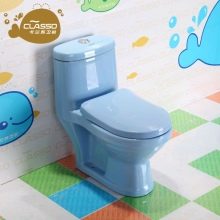
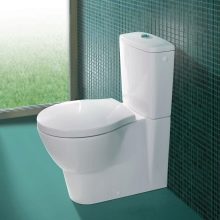
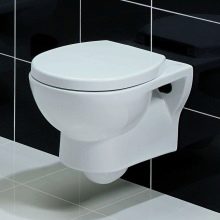
Manufacturing materials
For the production of toilet bowls, materials such as stainless steel, plastic, natural and artificial stone, porcelain and earthenware are used. The last two materials are made from the same raw materials and differ only in the firing technology.
- Porcelain is considered the highest quality material and has a very dense structure. Thanks to this, porcelain toilets can serve for more than 30 years, have minimal water and odor absorption, are easy to clean and, unlike faience models, preserve the integrity of the glazed coating for much longer.

- Faience is an economy-class material, it serves much less porcelain, has a water absorption of about 10% and quickly loses its original gloss. In addition, even with careful handling, the enamel coating begins to crack over time, which also does not add to the attractiveness of the toilet. The service life of earthenware models usually does not exceed 10-15 years.
It should be noted that it is almost impossible to visually distinguish a porcelain product from a faience product, which is why you have to rely solely on the information specified in the passport.
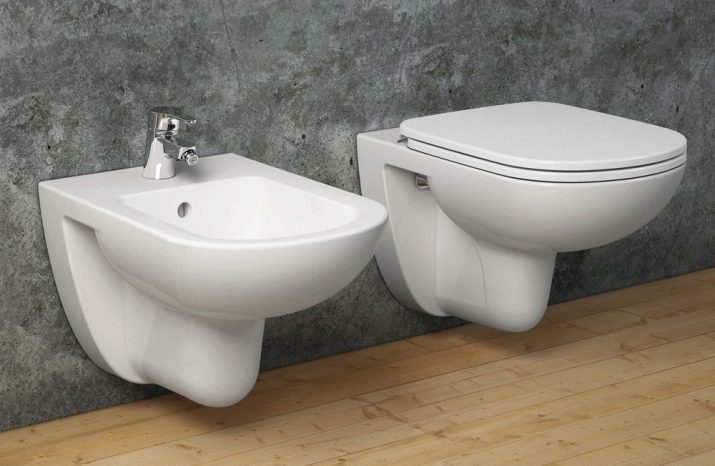
- Steel often used to create expensive exclusive models, it is highly durable and excellent wear resistance. The steel toilet fits perfectly into any ultra-modern interior and often acts as an independent and sometimes the central design element in it.

- Natural and artificial stone It is also used to create author's models and allows designers to implement bold designs and bring the most incredible ideas to life. Stone toilet bowls look expensive and serious, indicating the wealth and delicate taste of home owners.They fit perfectly into most interior styles, but look more harmonious in classics and baroque. The disadvantages of stone models are the high cost, cold surface of natural material and too much weight, which is why it is undesirable to install them in houses with wooden floors.
Of artificial stones, lithium marble is especially good. Products made from it perfectly imitate natural material, however, unlike natural material, they are much cheaper and have a warm surface.
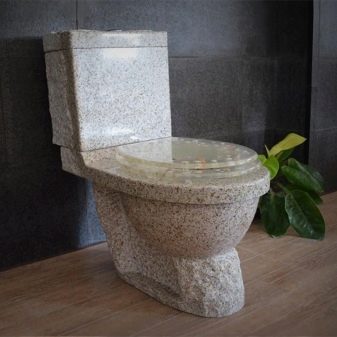
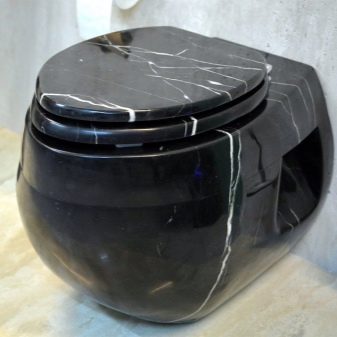
- Polymers They are also often used for the production of toilets and are characterized by high performance and low price. The most widely used are acrylic toilets coated with high-strength resins and fiberglass. The advantages of polymer toilets include light weight, a wide variety of colors and shapes, a dirt-repellent coating and easy installation.
Among the minuses, they note low resistance to shock loads, mechanical damage and temperature extremes. In addition, acrylic toilets should be cleaned without the use of abrasives or chemical solvents.
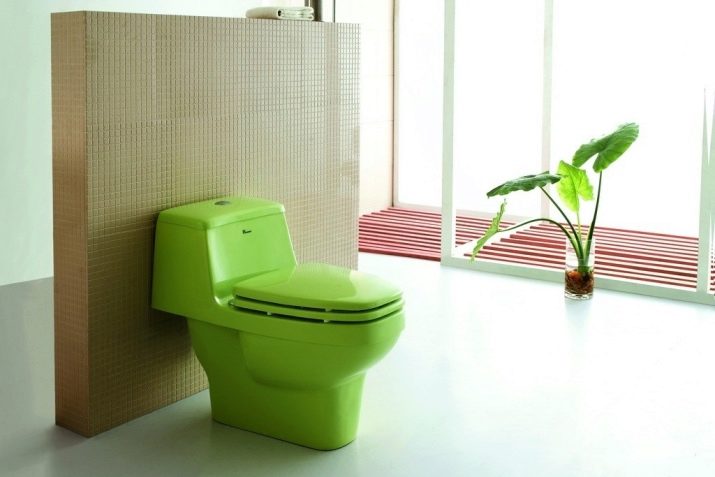
- Glass it is used only for the manufacture of exclusive models to order and is not used for mass production. Such models look very unusual and somewhat futuristic, but from an aesthetic point of view, they are considered not the most successful option.
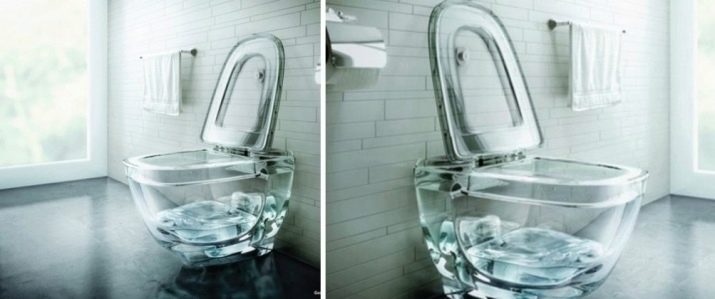
Additional functions
Modern toilets have a large number of additional options, such as electronic control, function of smooth lowering of the lid, self-elimination of odors, automatic flushing, drying with a hairdryer after carrying out hygiene procedures, anti-splash system and even playing the sound of bubbling water.
The last option is intended for especially shy users who do not want specific sounds to be heard when using the toilet. The option allows you to create a sound curtain by simulating a pouring liquid, while saving real water.
Expensive elite toilets are capable of independently turning on the toilet seat heating and are able to self-clean using the modern TurboFlusc technology, which leaves no chance for the remains of fecal matter.

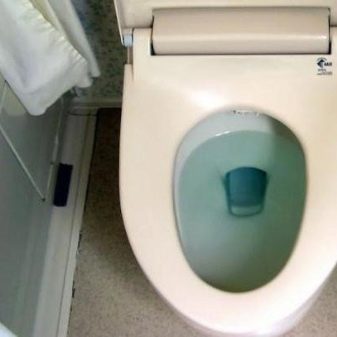
A particularly popular option is bidet coverallowing you to take hygiene procedures without leaving the toilet. The system is equipped with numerous nozzles and nozzles, allowing not only to regulate the pressure and direction of the supplied liquid, but also to heat it up to the desired temperature. The bidet nozzle is activated at the touch of a button, after which a spout with nozzles is pulled out and begins to spray water. At the end of the procedure, the handpiece is automatically cleared of dirt and retracted.
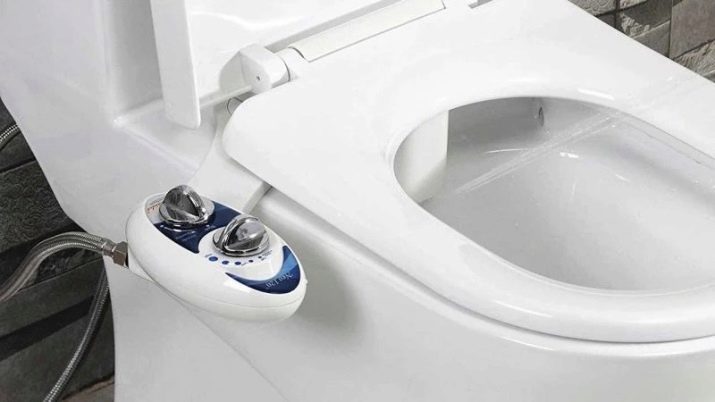
A very useful function is sensor drainage system, which works according to the following principle: when a person enters the toilet, a photocell is triggered, which gives a command to fill the tank with water. When a person leaves the bathroom, the flush is performed automatically, without requiring any additional actions from the visitor. The downside of the system is the need to move your hand when you are in the toilet for too long, otherwise, the presence sensor stops recognizing the visitor and activates an automatic flush.
But for owners of super-intelligent cats accustomed to using the toilet, the sensory system will be an excellent solution to the problem of removing an unpleasant odor in the absence of the owners.
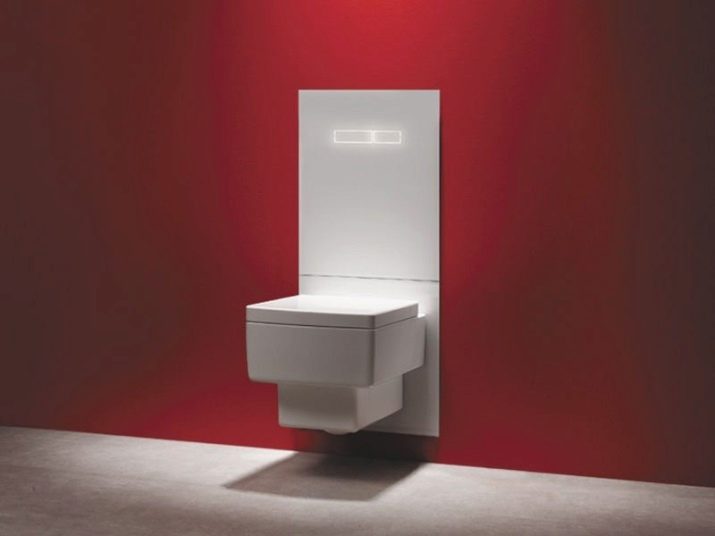
For public toilets, an option such as cover pedal control. Visitors to the establishment do not need to touch it with their hands, which undoubtedly increases the hygiene of using the toilet. The next function - an antibacterial surface coating - also contributes to the safe use of a toilet in a public place.
Used as spraying compositions based on zirconium or silver, which, together with the installation of antibacterial ultraviolet lighting, very effectively deal with bacteria, mold and mildew.
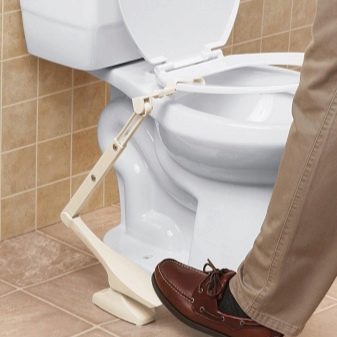

Color and design
The modern plumbing market offers toilets in a wide range of colors and designs. This greatly facilitates the selection of the desired model and allows you to choose the device in accordance with the design of the bathroom or toilet. For the classic trend, as well as for Provence and retro styles many manufacturers have established the production of toilets with a top flush cistern, which is located on a high pipe. Such models fit perfectly into the aforementioned styles, especially accurately reflecting and emphasizing the spirit and atmosphere of those times.
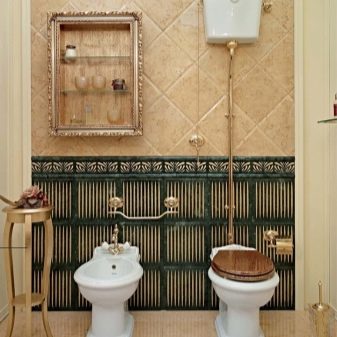
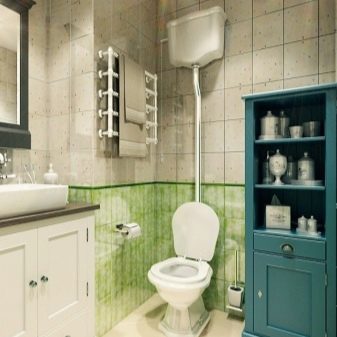
Lovers of original styles such as loft, futurism and metallic, will be able to purchase a metal toilet, made of stainless steel with chrome or nickel plating. For lovers of minimalism, hi-tech and other modern styles, a toilet bowl painted in some unusual color, combined with other bathroom furnishings or with decorative wall covering, will be a good choice.
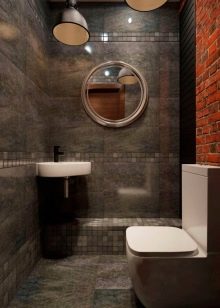
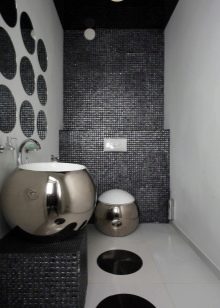
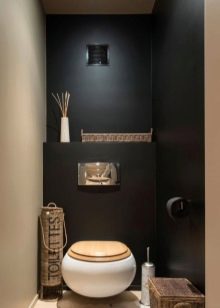
Modern technologies make it possible to apply beautiful coatings to devices that very naturally imitate all kinds of textures. If you wish, you can order an artistically painted version, choosing an ornament, color and texture to your taste.


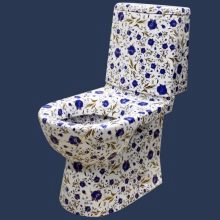


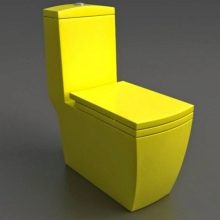
We take into account the water consumption
Most modern tanks are equipped with one or two release buttons, pressing which activates the mechanism for draining fluid from the tank. Latest models are equipped with a double flush system and are equipped with two buttons at once, the smaller of which gives the command to release a small amount of liquid, usually 2-3 liters, and the larger one is designed to completely empty the tank (6-8 liters).
On some models, both buttons must be pressed to completely empty the tank. The push-button flush system allows you to significantly save water and not to drain the entire tank after visiting the toilet for a little need.
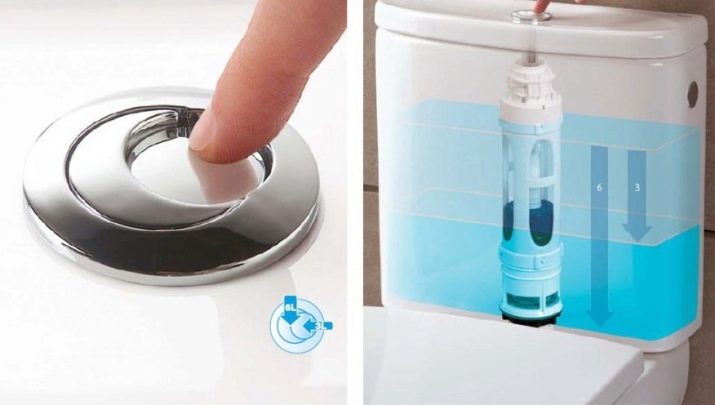
Popular models
Today, in plumbing stores, you can see a huge number of toilets from various companies, differing in cost, quality and design. Below are the most popular samples that occupy the first lines of ratings according to the version of online stores.
- Italian company Roca has been manufacturing toilet bowls for a long time and supplies its products to many countries around the world. The models are distinguished by a neutral, laconic design that fits into the interiors of any style. For example, consider the floor-standing wall model Roca The Gap 342477000equipped with a 4.5-liter flush tank and an anti-splash system. The product is produced in white and costs 8290 rubles.
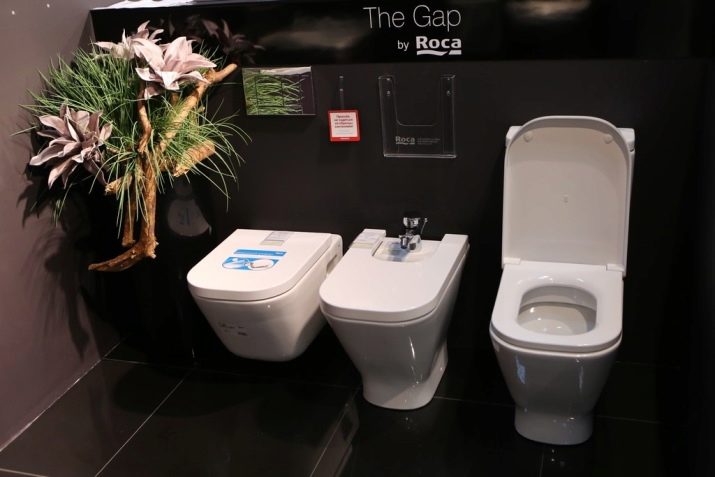
- Models of the Swedish company Gustavsberg also well known to the Russian consumer. The company is engaged in the production of plumbing fixtures and accessories, produces both floor-standing and hanging toilet bowls. All products of the company are covered by a 25-year warranty. As an example, consider a pendant model with a seat Gustavsberg Logic 5693 56939901 worth 8560 rubles. The device is designed for horizontal water supply, made of porcelain and equipped with an anti-splash system.
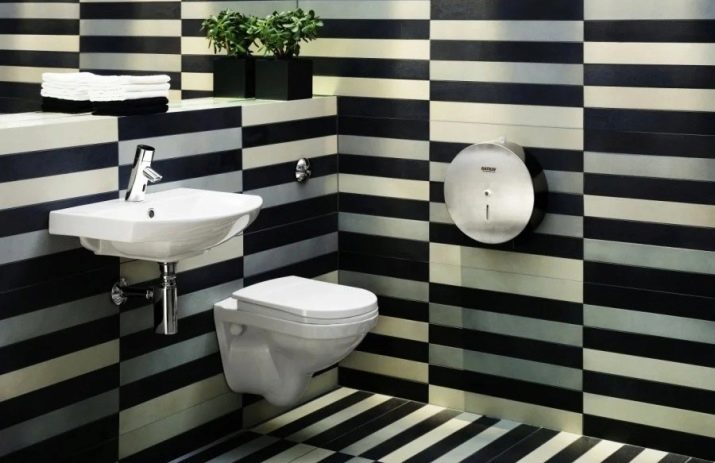
- Russian enterprise "Oskol ceramics" manufactures high-quality sanitary ware of the economy class category, well known in the neighboring countries. An example of high quality is the floor model. "Leia Lux", made in white, costing 6450 rubles. The toilet bowl is made of porcelain, has an oblique outlet and is presented in dimensions 65.6x36 cm.The height of the product together with the compact cistern is 80 cm.
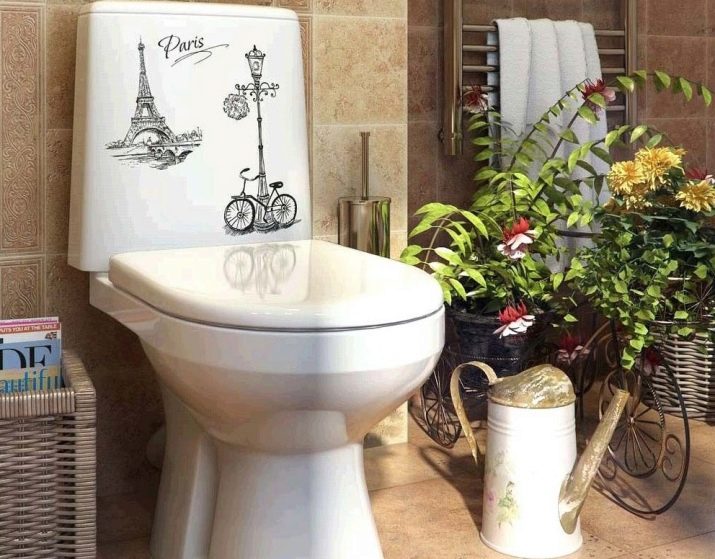
- Japanese company Toto manufactures high-tech toilet bowls equipped with a large number of additional options. As an example, consider the suspended model Toto CF CW132Y + TCF6530G with electronic bidet seat and temperature control.The toilet is equipped with an antibacterial coating, a flush that works in two- and three-jet mode, an option for pre-wetting the bowl and a remote control of the lid, which ensures its smooth closing. The appliance has a heated seat and a dryer that supplies warm air. This Asian model costs 135,800 rubles.
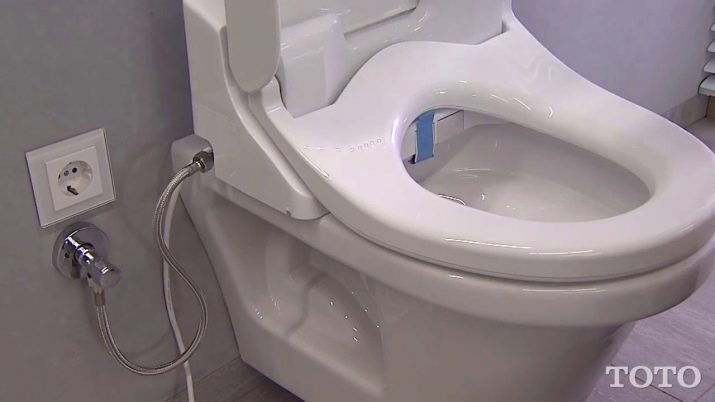
How to choose?
When choosing a toilet, you need to pay attention to a number of important points.
- First of all, you need to build on the size of the toilet and in small bathrooms to purchase compact round suspended models with a cistern built into the wall.
- When choosing a drainage system, you need to know that the circular system is considered more effective, but it can only be used with soft water.
- When buying a toilet for public restrooms it is better to opt for models with an antibacterial coating, a funnel-shaped bowl and an anti-splash system. This will relieve the bathroom of an unpleasant odor and prevent the appearance and reproduction of pathogens.
- When buying a pendant model it is necessary to make sure that the frame is intact and that there are no tears, rust and traces of peeling paint on it. You also need to check that all fasteners fit freely into the sockets and are present in the complete set.
- If the bathroom is tiny but it is not possible to install a drain tank in the wall, you can buy a small round toilet with a top cistern on a long pipe. Such models, although not often, are still on sale and will be a good solution for miniature bathrooms.
- When buying a foreign model you need to make sure that spare parts are available on the free sale and that service centers are present.
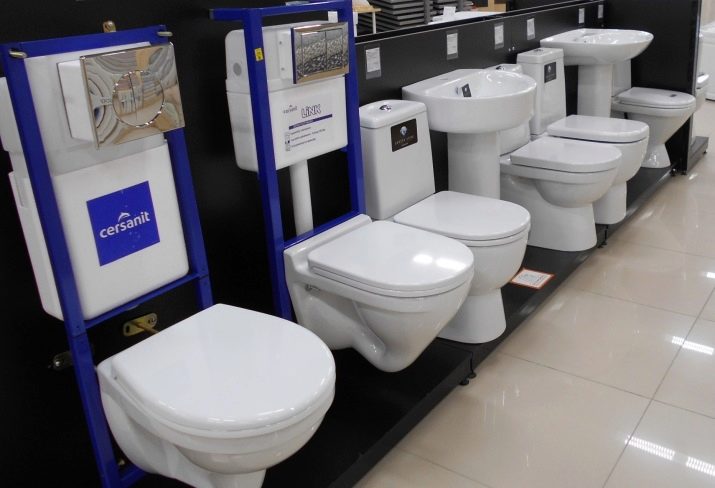
Care Tips
Toilet bowl care consists of in its regular hygienic cleaning with toilet brushes and medium-hard sponges. Glaze-coated surfaces can be cleaned by any means, including solvents and alkalis, but with acrylic models you need to be extremely careful and use only mild neutral compounds.
To remove plaque from ceramic toilets, you can use a mixture of lemon juice and soda, or vinegar and water, taken in equal parts. At the end of the treatment, the surface of the device is rinsed with clean water and wiped dry with a soft, lint-free cloth. With careful use and timely care, the toilet bowl can serve for more than a dozen years.
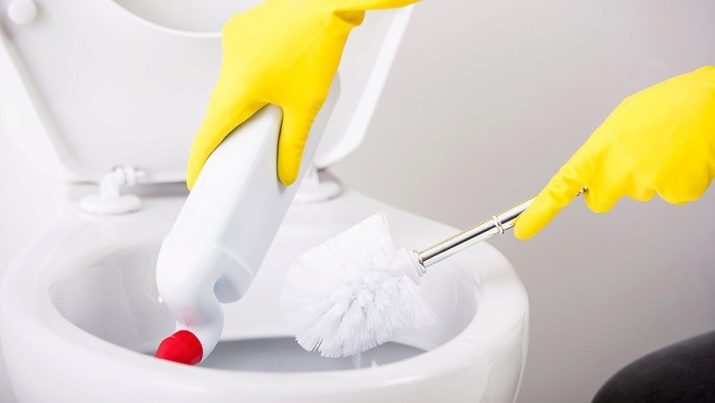
Next, watch a video with tips on choosing a toilet for your home.








